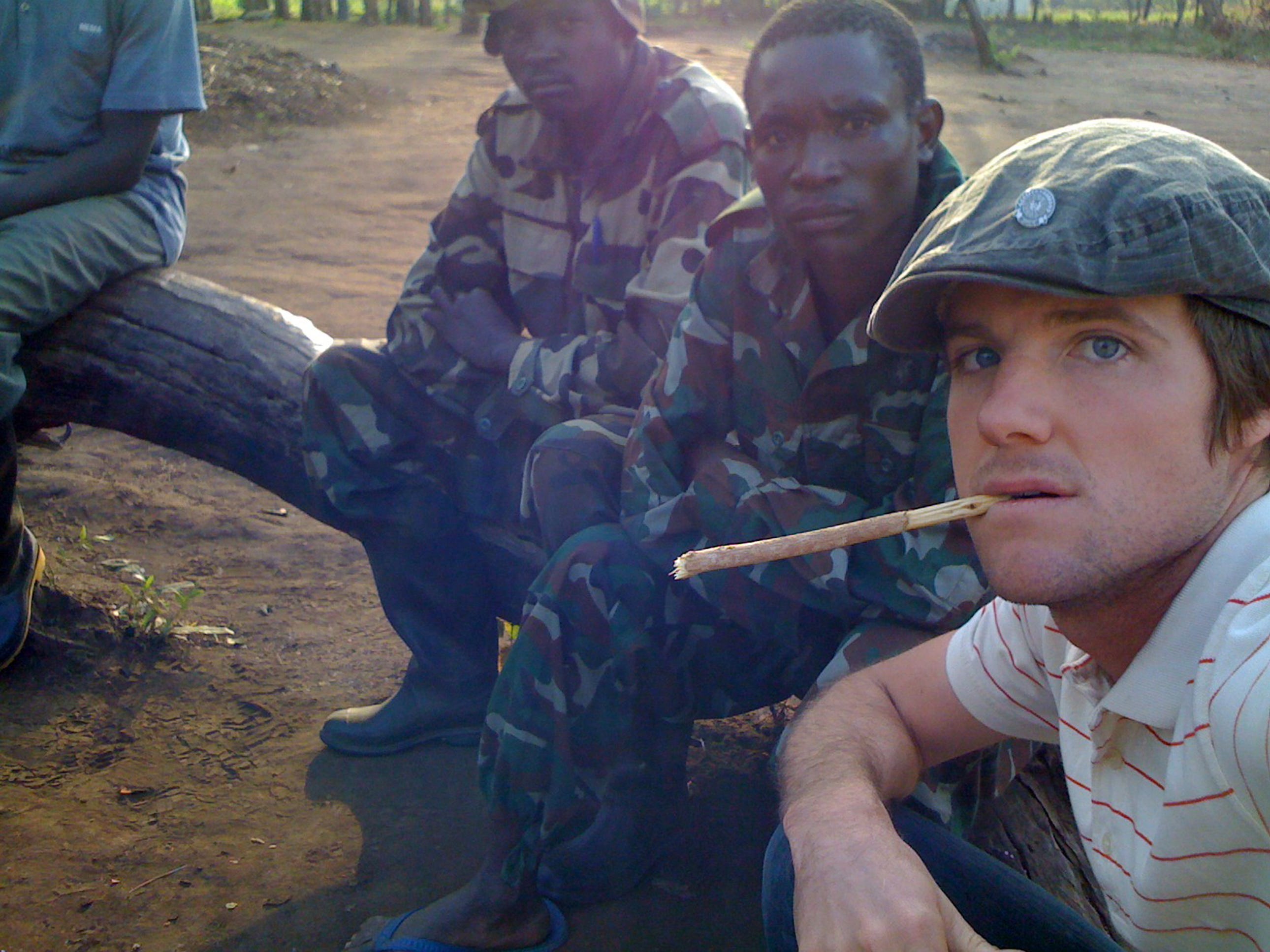Why I Couldn’t Stop Thinking About ‘Kony 2012’
Like so many other young people, I was sure—for a hot minute—that this viral video would change the world. A decade later, its rise and fall says more about our culture than most would like to admit.
I was 16 when Kony 2012 was released. I remember watching as the video took over my Facebook feed one night after school, convinced that this would be a defining moment for my generation. Countless others felt the same way. Then the tide turned just as quickly. The astronomically successful video became a disaster, and faded into obsolescence. A decade later, as the video still lingered in people’s memories, I wanted to take a look at whether Kony had had an impact at all, as well as where it stood with the people who created it.
In early 2022, I wrote a short piece about Kony 2012 for The New York Times, arguing that it was an important digital relic that — unwittingly — shaped the way we engage in online discourse today. Writing that piece was a somewhat stressful experience. Speaking to Jason Russell, the man behind Kony 2012, was crucial, but I couldn’t get him until the final hour — literally. After many, many, many emails, Jason — who is now terrified of press after becoming the center of a media firestorm shortly after the release of the video — got on the phone with me hours before my deadline on a Monday morning. On that call, he was clipped, impenetrably polite. I got what I needed for that piece — some context, some good sound bites — but I filed the article wishing I had had the opportunity to dig a little deeper beneath the surface.
Almost exactly a year later, Brendan Spiegel, Narratively’s editorial director, reached out and asked whether I’d like to revisit Kony 2012 in greater detail. The events had stuck in his mind, too, and he was also wondering if there was a deeper, more complex human story to tell than the hero-turned-villain narrative that played out on the web in 2012. It was great timing. While I’m usually based in the U.K., I also happen to be in an outrageously long-distance relationship with someone who lives on the West Coast of the U.S. I’d just landed in L.A. — where Jason is based — when I received the email, and I still had a lot of questions left over from the previous article.
I reached out to Jason almost immediately, having no idea where we stood, and asked him to coffee. I was surprised by his quick response. He agreed to drive to meet me. Instead of coffee, we shared two beers, and he poured his heart out to me. I like to think of myself as someone on the steelier side, but I left our first meeting shaking, overstimulated by Jason’s sheer emotional intensity and the stories he shared about his psychotic breakdown, his childhood sexual assault and his plan to try to save the world once again.
As I’m finding more and more with my interview subjects — artists, intellectuals, people galvanized and wholly possessed by their work — there often exists a fine line between mania and brilliance; intense drive and illness. This was my experience with Jason, someone whose own mission had left him hospitalized just over a decade ago.
Jason and I spent several hours together. He was an excellent storyteller. I sometimes wondered whether I would be able to tell his story better than he could. It was clear he’d already spun his life into a narrative, a neat feature-length film with clearly delineated arcs, a million times over. I knew it was necessary to find the complications and the conflicts in the version of events he was telling me. It was important for me to reach out to Ugandans like Milton Allimadi, for instance, who told me that Jason’s focus on Kony was obscuring even deeper horrors that have haunted Uganda.
I also wanted to give weight to the buried voices in the Kony 2012 story — the people working alongside Jason in the office. Those people told me to speak with the “roadies,” who’d spent countless days and sleepless nights laying the groundwork that turned this film into what most people viewed as an overnight internet success. All of whom were excellent interview subjects. They were more than happy to chat with me; it’d been a long time since they’d spoken to anyone about the events surrounding Kony 2012. Many of the people who worked on it now suffer from PTS. I wanted to acknowledge that and the irony therein; the severe impact of Kony 2012 on the people who had worked on it, the joke it had become to the rest of the world. The pathos was exquisite.
It was very easy to become consumed by this story. But I kept reminding myself: No matter how much I worked on it, thought about it, talked about it, none of it was a shade on the work that went into Kony 2012 itself, a project that had many people working long days for several months. I might never know that level of intensity, nor would I ever want to. I’ve seen the result firsthand: a group of people who have been shaken to the point of illness, the stress incurred still lingering 10 years on. Seldom do we think of the people who are subject to viral flash fame, nor the ways in which it fundamentally alters their psychological makeup. Kony 2012 remains one of the greatest case studies in capturing the entire internet’s attention and then sharply falling from grace.
Emma Madden is a journalist primarily based in Brighton, England. They have written for the New York Times, GQ, The Guardian, among others.
Brendan Spiegel is the Editorial Director and Co-Founder of Narratively.


